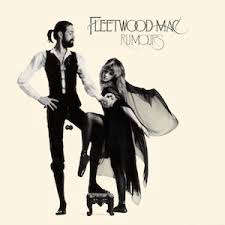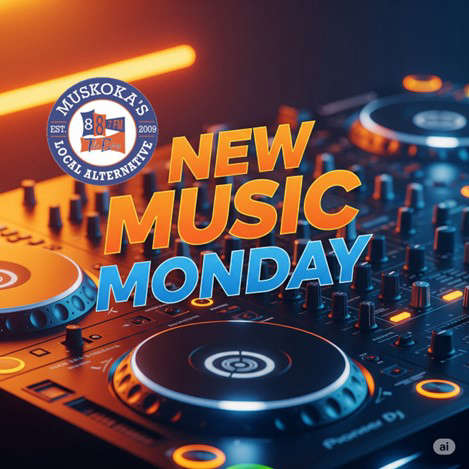
On June 18, 1977, Fleetwood Mac’s “Dreams” hit No. 1—the same day the LP format that made Rumours possible was introduced 29 years earlier.
June 18 stands as a milestone in music history for two distinct, yet profoundly connected reasons. On that date in 1977, Fleetwood Mac earned their first and only No. 1 single in the United States with “Dreams,” a slow-burning track from their landmark album Rumours. Exactly 29 years earlier, on June 18, 1948, Columbia Records introduced the 33 1/3 RPM long-playing record, launching a format that would revolutionize the way music was recorded, consumed, and preserved.
Together, these two moments—nearly three decades apart—highlight how technological innovation and creative expression can converge to leave a lasting mark on popular culture.
By the time “Dreams” reached the top of the Billboard Hot 100 in June 1977, Fleetwood Mac had already experienced a remarkable rise. The band had evolved through several lineups since its founding in 1967, but it was the arrival of Stevie Nicks and Lindsey Buckingham in 1975 that transformed the group into a commercial powerhouse.
Written by Stevie Nicks and recorded in early 1976 during the tense and emotionally charged *Rumours* sessions, “Dreams” is a rare case of a soft, introspective ballad breaking through to widespread acclaim. Built on Mick Fleetwood’s steady beat, Christine McVie’s understated piano, and rich vocal harmonies, the song put Nicks’s voice and lyrics—rooted in her breakup with Lindsey Buckingham—front and center.
Despite the fractured relationships within the band, *Rumours* became a massive success. Released in February 1977, it won the Grammy for Album of the Year and eventually sold over 40 million copies worldwide. “Dreams” reached No. 1 on June 18, 1977, becoming Fleetwood Mac’s biggest chart hit and a defining track of its time.Despite the turbulent backdrop, Rumours became a phenomenon. Released in February 1977, it would go on to win the Grammy for Album of the Year and eventually sell over 40 million copies worldwide. “Dreams” climbed to No. 1 on June 18, 1977, marking a high point in the band’s chart history and cementing the song as a defining anthem of the era.
As coincidence would have it, the very format that enabled Rumours was introduced nearly 30 years earlier on the same date. On June 18, 1948, Columbia Records hosted a press event at New York’s Waldorf-Astoria Hotel to debut the 12-inch, 33 1/3 RPM long-playing microgroove record. Developed by chief engineer Peter Goldmark and his team, the LP was created to overcome the time constraints of the 78 RPM shellac disc, which allowed for just a few minutes of music per side.
The LP offered over 20 minutes of continuous play per side, dramatically expanding the possibilities for composers, musicians, and record labels. Initially aimed at classical recordings, the format was quickly adopted by jazz and pop artists. It soon became the industry standard, providing the foundation for the concept of the “album” as a cohesive artistic statement.
With its improved sound quality, longer runtime, and increased durability, the LP changed not just how music was played, but how it was conceived and experienced. Artists were no longer confined to brief singles; they could now explore themes and narratives across multiple tracks, shaping albums like Rumours into cultural landmarks.
The shared date of June 18 draws a compelling line between format and artistry. Without the invention of the LP, Fleetwood Mac’s Rumours—and the slower, emotionally layered pacing of a track like “Dreams”—might not have been possible. The long-playing format allowed artists to slow down, take creative risks, and develop work that resonated beyond the constraints of radio-friendly singles.
It is fitting, then, that “Dreams”—a song that took its time to unfold—would top the charts on the anniversary of a technological leap that quite literally gave music more room to breathe. Nearly half a century later, both the song and the format remain essential parts of how we understand music history.
Sources:
- Billboard Chart Archives
- Library of Congress
- ClassicBands.com
- Wired Magazine
- The Guardian
- RIAA Gold & Platinum Certifications
- The Bay 88.7 - On This Day



 New Music Monday: From Indie-Soul Introspection to Stadium Rock Power Ballads
New Music Monday: From Indie-Soul Introspection to Stadium Rock Power Ballads
 Dickey Betts: The Fiery Rise of a Southern Rock Architect
Dickey Betts: The Fiery Rise of a Southern Rock Architect
 Hawksley Workman’s Odd Christmas Songs Are a Homage to Huntsville Roots and Holiday Messiness
Hawksley Workman’s Odd Christmas Songs Are a Homage to Huntsville Roots and Holiday Messiness
 Billy Joel's Historical Anthem "We Didn't Start the Fire" Hit The Charts On This Day
Billy Joel's Historical Anthem "We Didn't Start the Fire" Hit The Charts On This Day













Comments
Add a comment